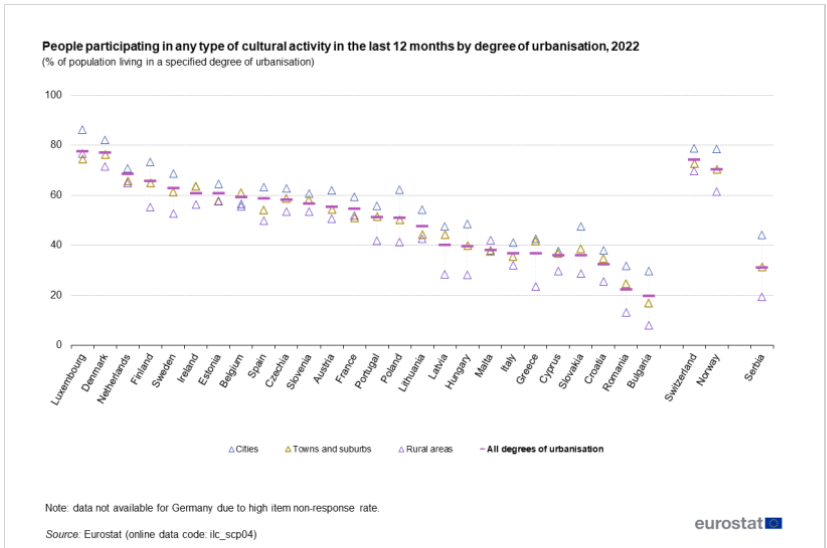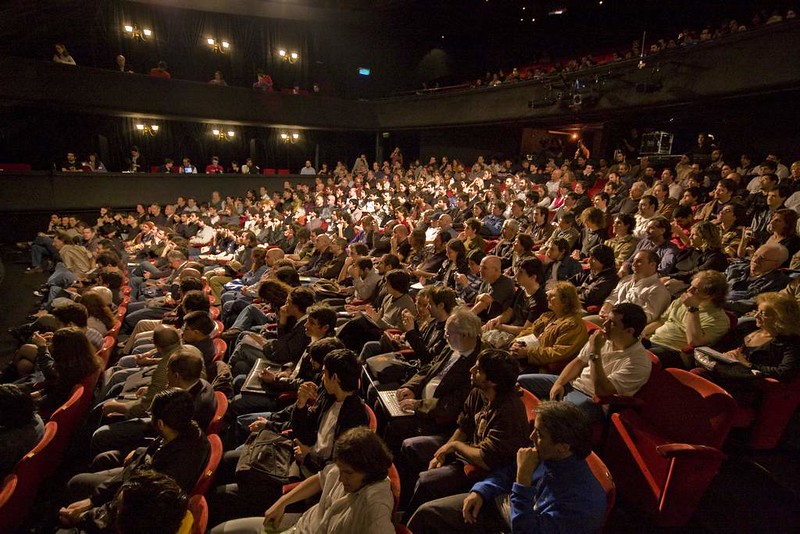Participation in cultural activities in European Union countries decreased in 2022 compared to 2015, according to Culture Statistics recently published by Eurostat.
Τhe qualitative evidence from the survey shows that participation in cultural activities is significantly influenced by people's income and, to some extent, by whether they live in large urban centres, small towns or rural areas. People with higher levels of education are more likely to participate in cultural activities. People with disabilities face more challenges.
The authors of the article point out that some data is from 2021 and that responses may be affected by restrictive policies due to COVID-19 in different countries. Nevertheless, there is a well-documented trend towards scepticism. The IETM, an organisation with thousands of members across Europe in the live performance sector, has republished some findings of the paper. Moreover, the qualitative treatment, including additional socio-economic indicators, can be particularly illuminating on wider issues of participation in cultural activities.
The article, part of the online publication Cultur Statistics, presents key findings on people's participation in cultural activities, which include: going to the cinema, attending live performances (plays, concerts, operas, ballet and dance performances, etc.) and visiting cultural sites (historical monuments, museums, art galleries or archaeological sites).
Cultural participation
In 2022, in most EU countries, over half of residents aged 16 or older participated in cultural activities in the previous year. Compared with 2015, reported cultural participation declined across all EU countries except Spain, where cultural participation remained stable at 58.5%. The most noticeable decreases were observed in France, Slovakia, Latvia, and Sweden. In 2022, the highest levels of cultural participation were primarily recorded in western and Nordic member states and the lowest in Romania and Bulgaria.

Participation by income
The findings on the income of those participating in cultural activities seem to be related to the gap in participation in cultural activities between the Nordic and Western countries and the Balkan countries.
Across the EU in 2022, the participation rate in cultural activities was at least twice as high for those in the highest income quintile as for those in the lowest income quintile. Differences in cultural participation rates between people in the highest and lowest income quintiles were relatively small in the Nordic Member States and Luxembourg. Conversely, in Bulgaria, people with the highest income were 6.5 times more likely to participate in cultural activities than their counterparts with the lowest income.
Urbanisation and education
Breaking down the population by the degree of urbanisation of area of residence showed a slightly higher percentage of cultural participation in 2022 among people living in cities, compared with residents of towns and suburbs and rural areas.

Among the population with a lower secondary education or less, there were only two countries in which more than half of individuals participated in cultural activities in 2022: Denmark (63.2%) and Luxembourg (54.3%). In Romania and Bulgaria, countries that were at the other end of the range, this rate was below 10%. In 19 out of 26 countries, cultural participation among individuals with a tertiary education was twice as high as among those with the lowest level of education.

Cultural participation of people with disabilities
Cultural participation is more difficult for people with disabilities. The results showed a lower rate of cultural participation among people with disabilities compared with the overall population aged 16 and over across all EU countries. In general, in countries with higher overall cultural participation rates, the participation rate among people with disabilities was also higher.
In the EU in 2022, cultural participation rates greater than 50% among people with disabilities were observed in Denmark (68.3%), Luxembourg (67.9%), Finland (55.4%), and the Netherlands (55.4%). At the other end of the scale were Bulgaria (6.1%), Romania (7.1%), Croatia (11.3%), and Cyprus (14.7%).
--
Photo: Damián Buonamico
Photo source













